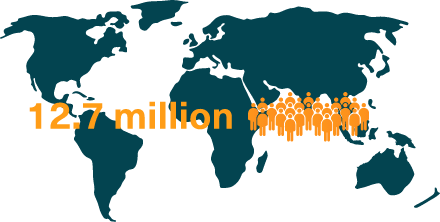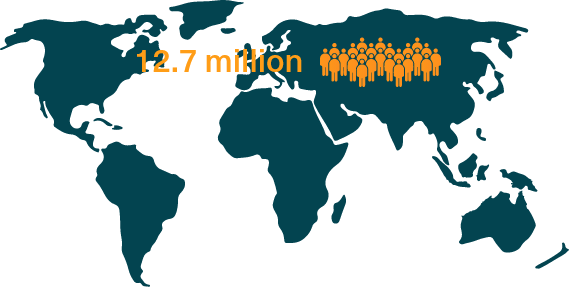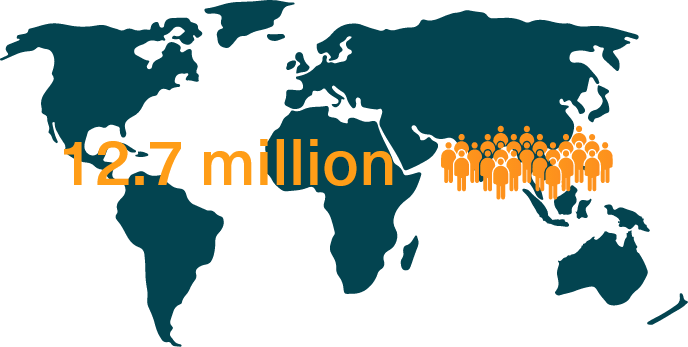Just as the oculus of the Pantheon allows light to illuminate the wondrous dome interior, the cornea lets light into the eye, enabling us to see all the world’s wonders. At Pantheon Vision, we are inspired by the brilliant architecture of the Pantheon and are committed to developing advanced bioengineered solutions that can better treat corneal blindness and restore vision for people around the world.
Corneal blindness is a treatable condition in which the cornea, the clear outer layer at the front of the eye, becomes opaque—often due to infection, disease, or trauma.2
In addition to affecting vision, corneal blindness can take an emotional and financial toll on patients—particularly in low-or-middle-income countries where corneal blindness is common and access to treatment is limited.1,3
There are more than 12.7 million people suffering from corneal blindness whose condition could be corrected by a corneal transplant. Despite significant efforts to enhance access to sight-restoring surgery, transplantation with donor tissue is not always practical, successful, or even possible.



The lack of available donor corneal tissue and the lack of surgeons trained in complex tissue processing and surgical techniques means that over half of the global population has almost no access to corneal transplantation.4
While corneal transplant surgery has been the long-standing gold standard, there are still significant improvements needed in graft acceptance, vision restoration and longevity.
KeraLink International provides a total of $4.3 million in funding
Read articlePositive feedback from interactive meetings provides guidance for road to PMA submission
Read articlePantheon Vision is an early research-stage organization developing bioengineered solutions to reduce the reliance on donor tissue to address corneal blindness.
At Pantheon Vision, we believe the ability to see should not depend on where you were born. That’s why we’re committed to providing revolutionary solutions for patients in emerging and developed markets – to cure corneal blindness and enable patients to regain all the joys of sight. We are developing products to improve procedures that will be measurably safe and effective while also being accessible and scalable.